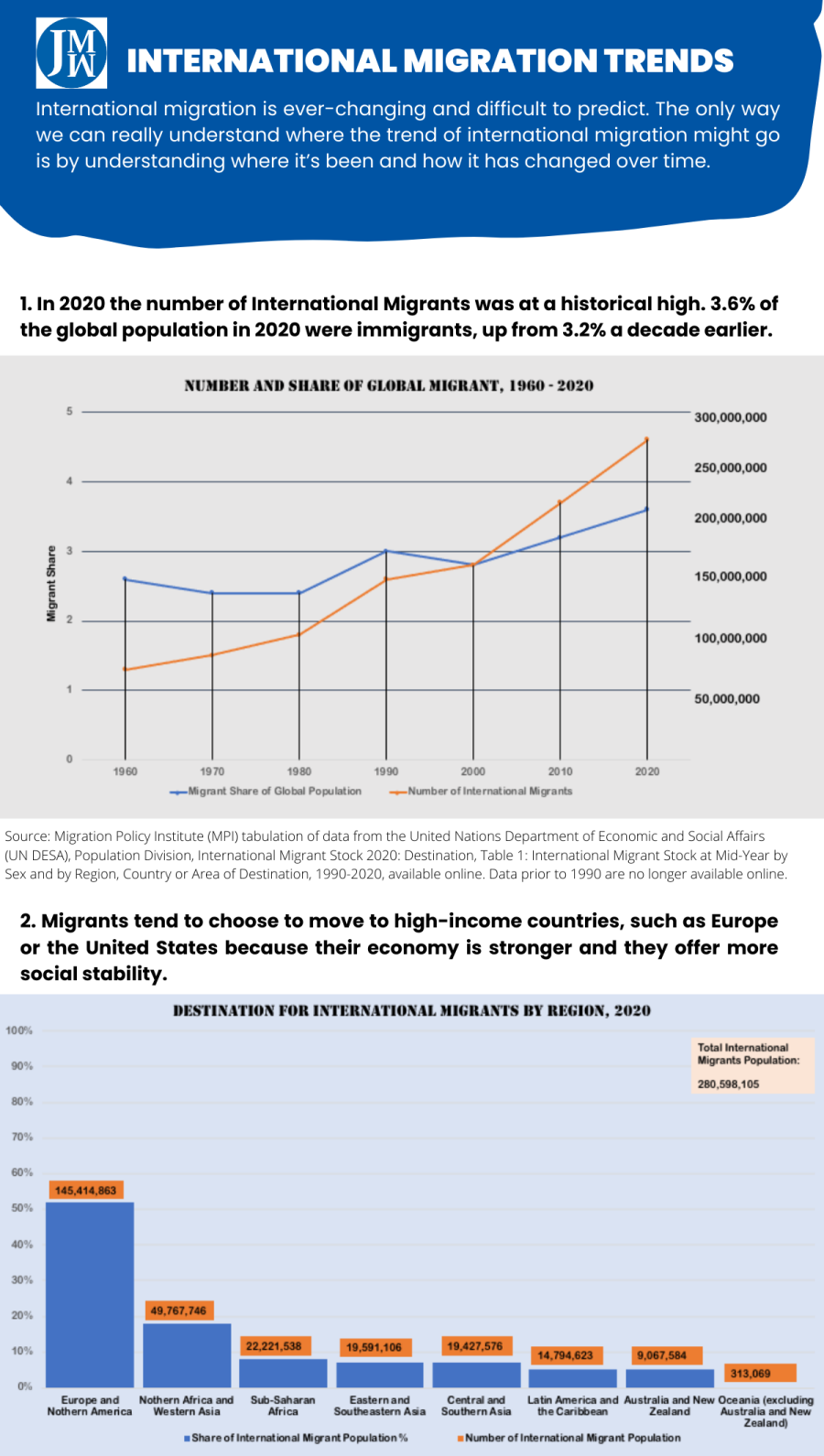The number of people living outside their country of origin is continuing to increase for many reasons. To understand what migration will look like, we need to know where it’s been and how it has evolved over time.
In 2020, the global migrant population had quadrupled since 1960, comprising 3.6% of the world’s inhabitants residing outside their nation of origin. Over the past decade alone, nearly 60 million individuals embraced migrant status. The surge in migration can be attributed to various factors, including both labor and family-related motivations. This graphical representation illustrates a consistent year-on-year increase in the number of migrants, and there is no indication that this trend is poised to change in the foreseeable future.
While migrants may not necessarily converge on a single destination, a significant proportion tends to gravitate toward high-income countries. This preference is fueled by the desire to capitalize on social stability and a robust economy. The data table reveals that more than half of all migrants choose to relocate to Europe or Northern America. Additionally, approximately 20% opt for Northern Africa or Western Asia. Notably, Oceania attracts a mere 3% of migrants, excluding Australia and New Zealand.
Breaking down the figures by individual countries, the United States boasts the highest percentage of migrants at 18%, totaling over 50.6 million in 2020. The subsequent countries in the top five — Germany, Saudi Arabia, Russia, and the UK — collectively host fewer migrants than the US, with a combined total of 50.2 million. Noteworthy shifts in the top ten destinations since 1990 include the inclusion of the UK, Australia, Spain, and the United Arab Emirates, hinting at a potential increase in migrant numbers in these nations.
(Click on the Image For Full View)


